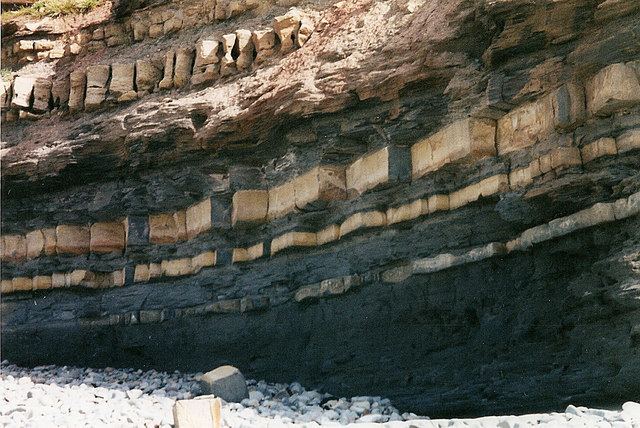 | ||
In the geologic timescale, the Sinemurian is an age or stage in the Early or Lower Jurassic epoch or series. It spans the time between 199.3 ± 2 Ma and 190.8 ± 1.5 Ma (million years ago). The Sinemurian is preceded by the Hettangian and is followed by the Pliensbachian.
In Europe the Sinemurian age, together with the Hettangian age, saw the deposition of the lower Lias, in Great Britain known as the Blue Lias.
Stratigraphic definitions
The Sinemurian stage was defined and introduced into scientific literature by French palaeontologist Alcide d'Orbigny in 1842. It takes its name from the French town of Semur-en-Auxois, near Dijon. The calcareous soil formed from the Jurassic limestone of the region is in part responsible for the character of the classic Sancerre wines.
The base of the Sinemurian stage is at the first appearance of the ammonite genera Vermiceras and Metophioceras in the stratigraphic record. A global reference profile (GSSP or golden spike) for the Sinemurian stage is located in a cliff north of the hamlet of East Quantoxhead, 6 kilometres east of Watchet, Somerset, England.
The top of the Sinemurian (the base of the Pliensbachian) is at the first appearances of the ammonite species Bifericeras donovani and ammonite genus Apoderoceras.
The Sinemurian contains six ammonite biozones in the Tethys domain:
